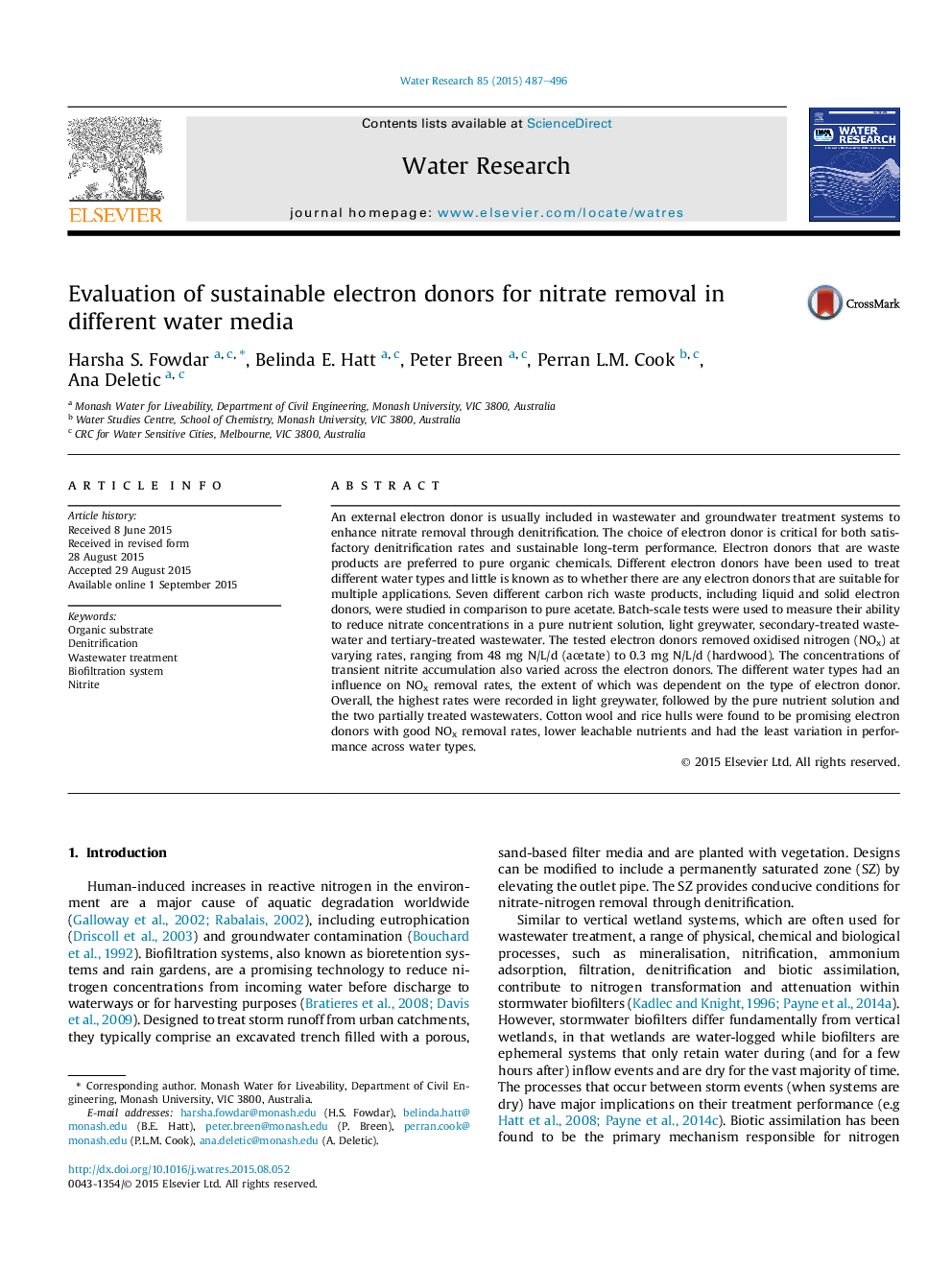| کد مقاله | کد نشریه | سال انتشار | مقاله انگلیسی | نسخه تمام متن |
|---|---|---|---|---|
| 6365926 | 1623083 | 2015 | 10 صفحه PDF | دانلود رایگان |
- The denitrification capacity of seven carbon substrates was measured in a batch scale system.
- Nitrate removal rate was acetate > cotton > spent grain > brewery waste > rice hulls > corn > woodchips.
- Nitrate removal differed across water types, the magnitude of which depended on substrate type.
- Concentrations of transient nitrite accumulation varied across substrates and water types.
- Light greywater may not require any external electron donor for satisfactory denitrification.
An external electron donor is usually included in wastewater and groundwater treatment systems to enhance nitrate removal through denitrification. The choice of electron donor is critical for both satisfactory denitrification rates and sustainable long-term performance. Electron donors that are waste products are preferred to pure organic chemicals. Different electron donors have been used to treat different water types and little is known as to whether there are any electron donors that are suitable for multiple applications. Seven different carbon rich waste products, including liquid and solid electron donors, were studied in comparison to pure acetate. Batch-scale tests were used to measure their ability to reduce nitrate concentrations in a pure nutrient solution, light greywater, secondary-treated wastewater and tertiary-treated wastewater. The tested electron donors removed oxidised nitrogen (NOx) at varying rates, ranging from 48 mg N/L/d (acetate) to 0.3 mg N/L/d (hardwood). The concentrations of transient nitrite accumulation also varied across the electron donors. The different water types had an influence on NOx removal rates, the extent of which was dependent on the type of electron donor. Overall, the highest rates were recorded in light greywater, followed by the pure nutrient solution and the two partially treated wastewaters. Cotton wool and rice hulls were found to be promising electron donors with good NOx removal rates, lower leachable nutrients and had the least variation in performance across water types.
249
Journal: Water Research - Volume 85, 15 November 2015, Pages 487-496
